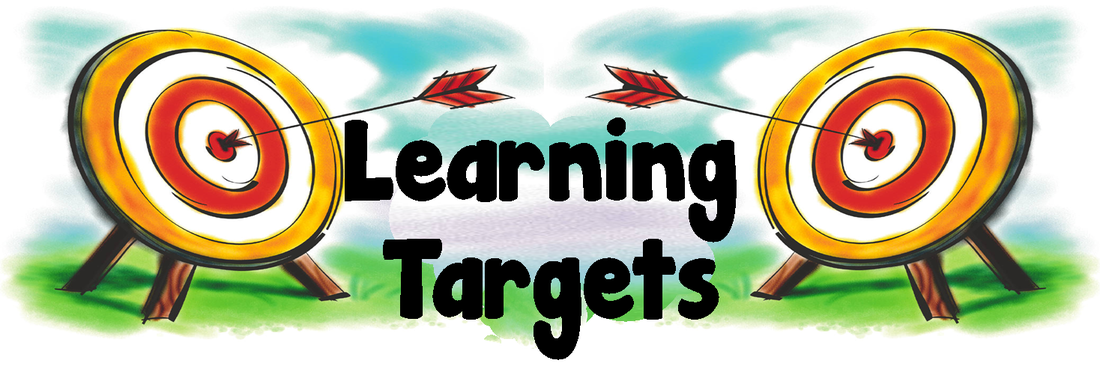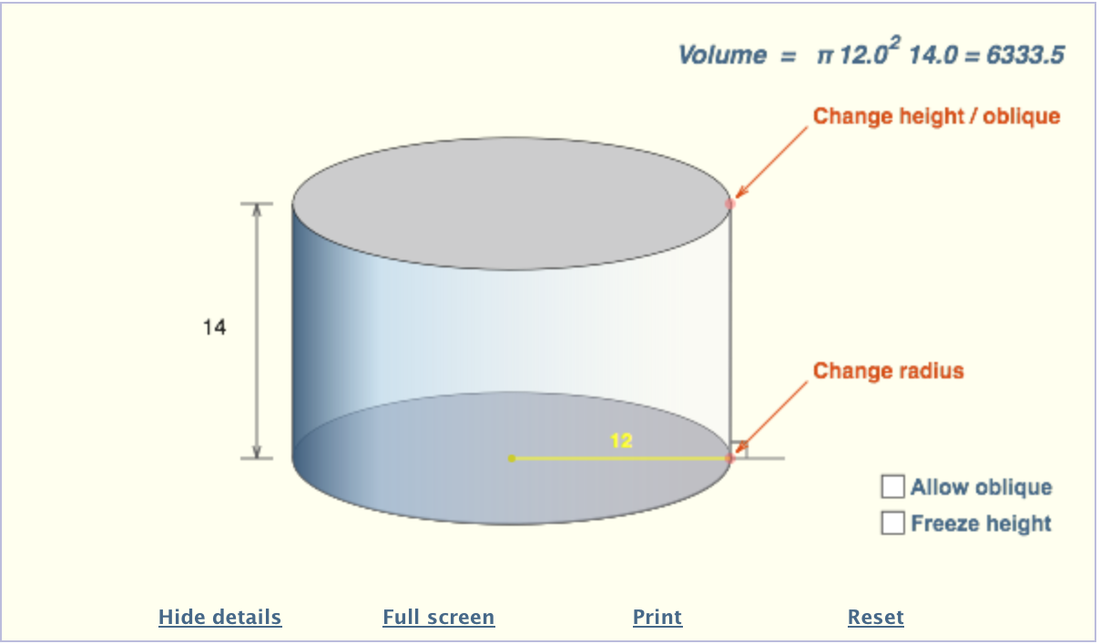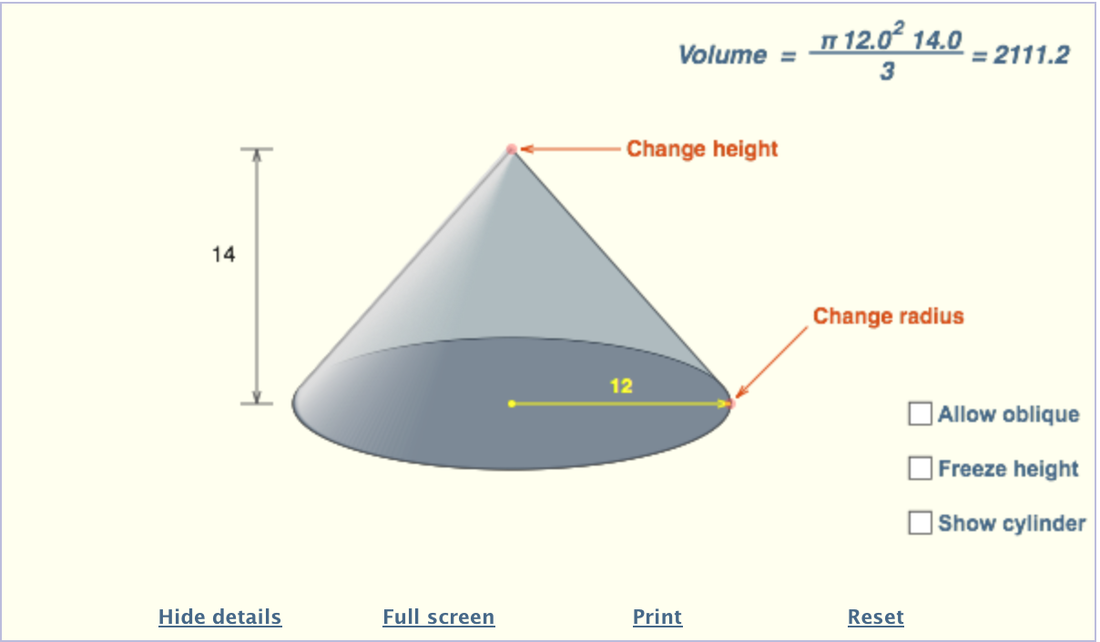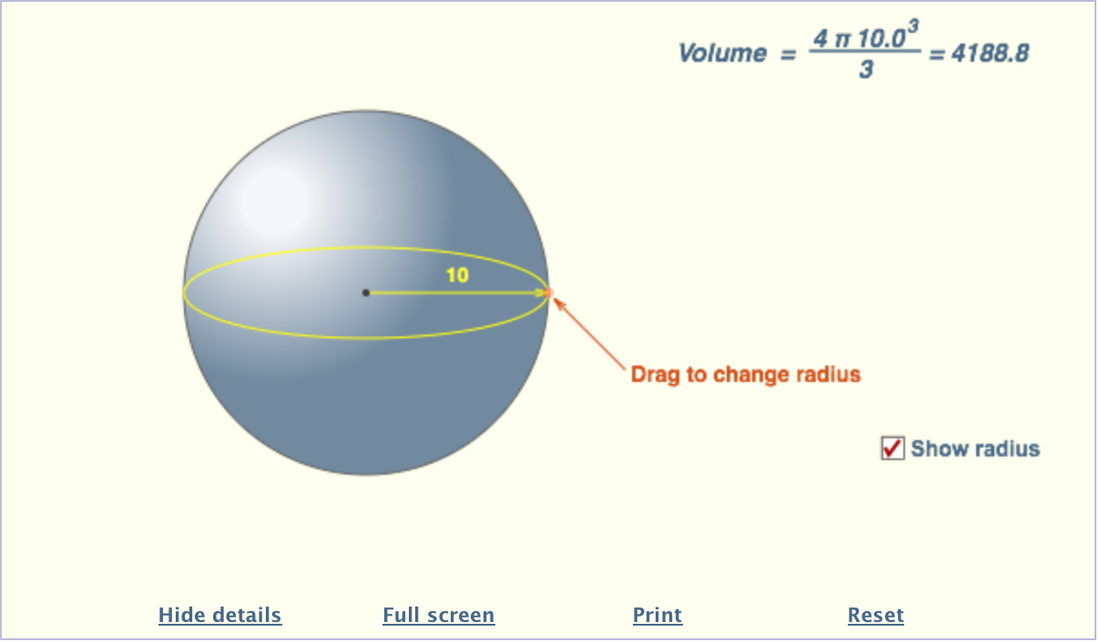Cylinders
|
As you see in the video to the right, to find the volume you need to know the radius and the height. Finding the volume is very similar to finding the area of a circle - you just multiply the area of a circle by the height.
First, find the area of the circle (π r^2). Then multiply it by the height. Finally, include your units in your answer. |
|
Tips & Tricks
-Remember you need the radius, not the diameter
-You can use 3.14 for pi -Your units would be cubed - Think "No point at the top, no divide" |
Cones
|
When finding the volume of a cone, you should be able to see this relates to a cylinder. Once you have the volume of a cylinder, you just divide by 3 to get the volume of the cone.
First, find the area of the base (π r^2). Then multiply by the height. Finally, divide by 3 to get the volume of the cone. Remember your units! |
|
Tips & Tricks
- Remember to use the radius, not the diameter
- You can use 3.14 for pi - Your units are cubed - Think "Points at the top, so I have to divide by 3." |
Spheres
|
For a sphere, the formula makes you take r and cube it, not square it. This is a big change compared to the two that you see above, the cylinder and the cone.
First, find the radius and cube it. Then multiply by 4 and then by pi. Finally, just divide it by 3. |
|
- Remember to use the radius, not the diameter
- You can use 3.14 for pi - Even though the shape is round, your units are still cubed - Use 4/3 rather than 1.333. It is more accurate |
Online Practice Problems
For each of the shapes in this standard, you can click on the image below and you will be taken to a website where you can see how the volume is computed. By simply sliding different points on the shapes, you can change the height or radius, and it will show you the volume of the shape.




